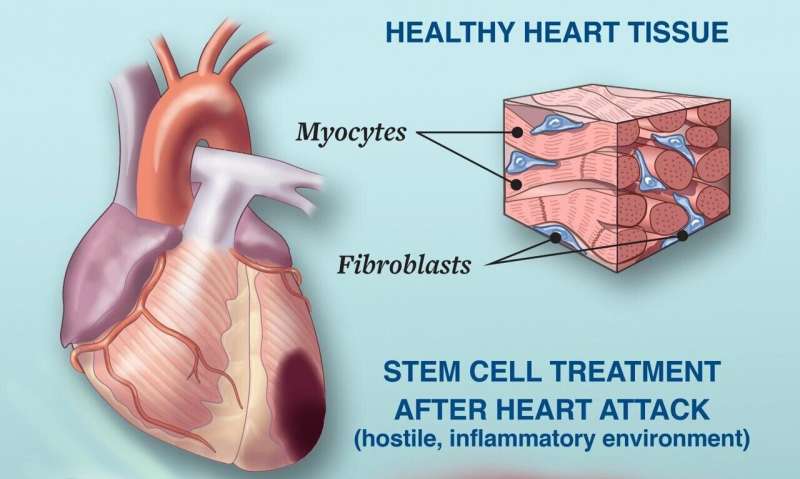Table of Contents
The authors keep in mind obstacles that remain, consisting of increasing the engraftment success and cell survival. Because the ISCI and Miller College are leaders around, the writers also worry the need to standardize definitions and end results measures in the area. "The Hare Laboratory remains at the leading edge of pioneering new therapies in this critical medical domain name.
Currently we are discovering how to harness such stem cells to assist patients recover their own damaged hearts."The research is guided by the Cedars-Sinai Heart Institute, with the collaboration of the Johns Hopkins University, where Dr. Marbn functioned prior to signing up with Cedars-Sinai in 2007. The 24 clients getting involved in the research study have hearts that were harmed and marked by heart assaults.

It takes about four weeks for the cells to multiply to numbers sufficient for therapeutic usage, about 10 to 25 million. In the third and final step, the now-multiplied stem cells are re-introduced right into the patient's coronary arteries throughout a 2nd catheter treatment. All clients in the research study had to have skilled heart strikes within 4 weeks prior to enlisting in the study project.
Later this summertime, it is prepared for that 12 even more people will certainly go through procedures to obtain 25 million stem cells, while 6 added clients will certainly be monitored as controls. The initial individual, Kenneth Milles, a 39-year-old controller for a tiny construction business in the San Fernando Valley, experienced a cardiac arrest on May 10 due to a 99 percent clog in the left anterior descending artery, a major artery of the heart.
The procedure to expand the cardiac-derived stem cells associated with the research was established by Marbn when he got on the faculty of Johns Hopkins College. The university has declared a patent on that intellectual residential or commercial property, and has certified it to a business in which Dr. Marbn has an economic passion.

All funding was stemmed from the National Institutes of Wellness, the Donald W. Reynolds Structure and Cedars-Sinai Medical Center. Marbn holds The Mark Siegel Household Foundation Endowed Chair and Director of the Heart Institute.
All about using stem cells to support Heart Failure
Cardiac arrest is a severe or persistent problem that impacts millions of individuals worldwide. The most typically accepted approaches of therapy typically consist of sign administration and medication considered life, so the burden triggered by the condition is heavy. Stem cell therapy for heart failure has actually arised as a new way to deal with and manage the core of the disease.
However, stem cell therapy can aid to ease signs and symptoms and enhance the heart's pumping capability. This therapy utilizes the ability of stem cells to self-regenerate and self-heal. Following the admission of stem cell shots for coronary infarction, numerous devices enter play: Stem cells for cardiac arrest promote the development of specialized cardiac muscle mass cells and regrow harmed tissue, enhancing the heart's pumping capability.
These are kinds of adult stem cells that are obtained from bone marrow, fat cells, and skin cells. These are the most typical and well-researched kinds of stem cells.
These are acquired from embryos and have the pluripotent capacity to transform into any type of sort of cells, including cardiac ones. The main problem with these cells is that, as they are drawn from embryos, they have many honest and legal constraints and are only utilized in specific circumstances. for the factors mentioned over.
Breakthroughs in stem cell therapy for Heart Disease you should know about
These cells originate in the heart and are well-suited to cardiac repair work. Medical Consultant, Swiss Medica medical professional The application and therapy of stem cell treatment is composed of 5 steps: Clients start with an on the internet assessment with our clinical advisor and are after that examined by a cardiologist, that will obtain the needed clinical history, do blood examinations, and demand imaging researches to determine whether stem cell treatment for heart failing is a practical choice.
We administer stem cells through pain-free stem cell shots for coronary infarction. A highly educated physician will certainly inject processed stem cells right into the blood stream; the whole procedure takes much less than an hour. After finishing the heart disease stem cell therapy procedures, our individuals will be monitored for any type of problems and outcomes.
Navigation
Latest Posts
Regenerative support for Heart Disease using stem cells
Breakthrough option for Heart Failure via regenerative medicine
Can you manage High Blood Pressure in today’s clinics?